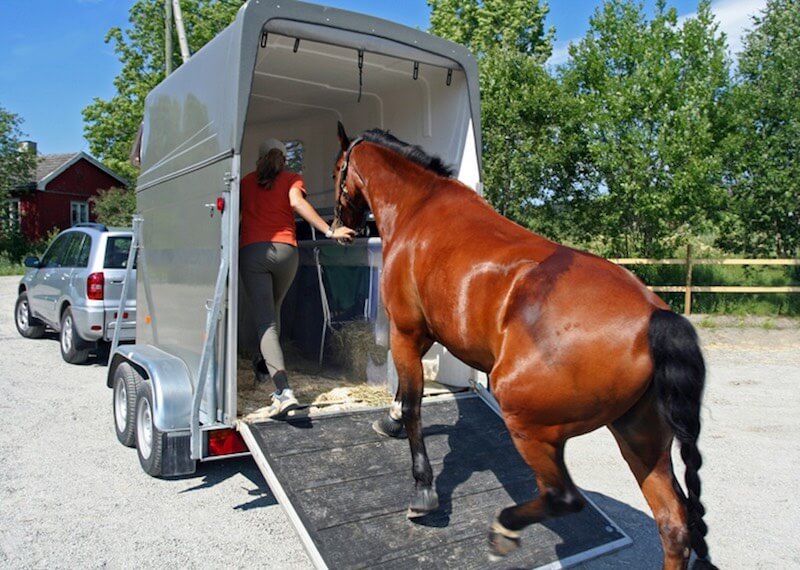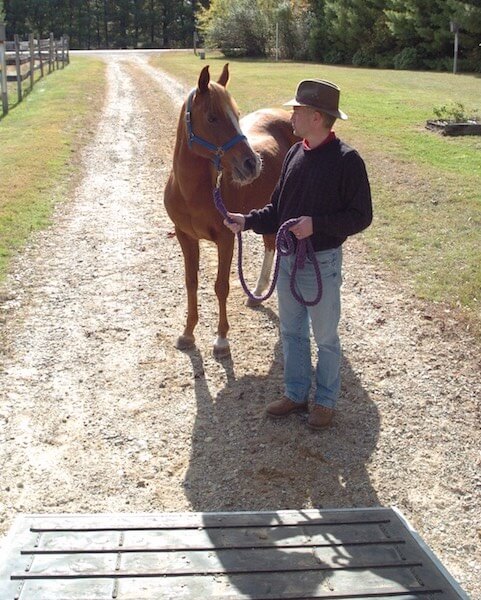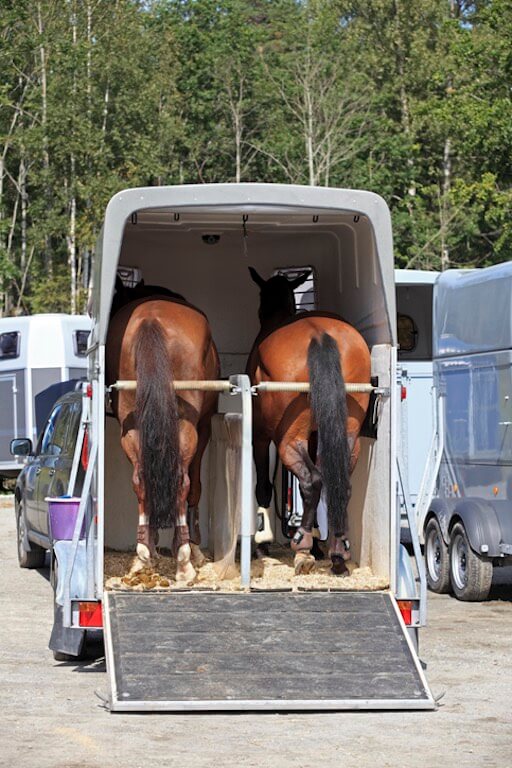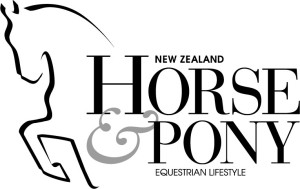
If we own a horse, for most of us there will be a time when we are going to need to transport it somewhere. And you don’t have to be in the horse world for long to have come across a horse that just doesn’t want to load into a float. It’s one of the most common situations that people ask for my help with.
Over two articles, I will share some of the practices that I have when loading and travelling my own horses. I have had many comments over the years; service station attendants who didn’t think I had horse in my float because they couldn’t hear them moving around or pawing when I was re-fuelling. Then there are people who watch my horses unload quietly, who see how confident I am that my horses will load, even in a situation that wasn’t ideal, and the most common comment I hear: “You’re so lucky…”
Well, it’s true, given all the dumb things I’ve done and all the miles I’ve travelled with horses by land and sea, I have been lucky.
I’ve also had some real-life learning experiences, twice had a wheel come off the float I was towing, one trailer fire and one towing vehicle fire as well as many other interesting incidents. Each one helped me to learn something.
The more I learn, the more I prepare, the more I prepare, the luckier I get. My luck usually comes from a lot of concentrated effort and work.
A good place to be
The more your horse wants to be in the float, the harder it is to put him off being in the float. There are a lot of situations and incidences like the ones mentioned that will put a horse off, so my biggest suggestion is to not travel anywhere until he REALLY wants to be on that float and you’ve had several sessions that have reinforced to your horse that the float is a good place to be, and everything is okay when he’s on there.
I’m sure we’ve all heard stories of horses that have been sent out of their stables because the barn is on fire only to turn around and run back to their stable, to their sad deaths. In a state of confusion and fear, a horse will go back to its last place of safety and comfort.
A very common thing that I hear is, “My horse loads fine but then rushes out”, and it’s true the horse does load fine. Remember, horses are only trying to be safe and seek both physical and mental comfort.
One of the best ways to tell how a horse feels about being in a float is to watch how they’re coming out. You don’t want them to be any more enthusiastic about coming out than they were about going in.
If this is your problem, then you can look forward to part two looking at float loading in detail, which sets the horse up to think his way forwards into the float. A horse moves in the direction of their most prominent thought.
Here are some tips to help things get a lot better with loading and travelling:
Before closing the ramp

- Load your horse into your float in different places. Horses aren’t good at generalising their learning, and you need them to do this to load successfully in different situations.
- After you’re happy that you’ve had several good sessions where your horse has loaded calmly, confidently and positively, turn the float around 180 degrees. Load him a time or two facing this new direction; more if it’s hard for him. Move your float to a different paddock, driveway or part of the property and have him load a time or two. The aim is to get to where the location of the float has no bearing on the quality of his loading.
- Doing this is one thing that can save you a lot of delays in loading your horse in the future. The ultimate is a horse that loads anywhere, anytime, any float, you just need to ask.
- For a green horse before his first trip: Practise closing and opening the ramp behind them without going anywhere, repeat it several times. Then unload, take a short break of a minute or two then load up and don’t shut the ramp. Finish with something easier than what you are working on.
The first trip
Leave your property, drive around the block and return home. By doing this you are not adding the stress of arriving at a new environment and having to deal with that.
After you’ve unloaded, put him on again, several times if that’s what is needed for him to be loading and standing calmly. Finish with something easier than he’s just done ie. load him on, don’t shut the ramp, then off load him.
To tie or not to tie: There are situations where either of these practices would be the right thing to do and there are situations where both would be the wrong thing to do. Don’t be fooled, there is no 100% safe way to lock a horse in a box and tow it at high speeds amongst drivers of other vehicles also travelling at high speeds.
Personally, I do tie my horses; however, I do it more to stop them from pulling the rope through and standing on it. I make sure that it is long enough so that if they go back they hit the butt bar and have no pressure on their head. You want to avoid a situation where you cause a horse to pull back inside a horse trailer.
Mind your driving
For the stability of the horse, your speed going in a straight line isn’t that much of a problem. It’s the changes of speed and direction that affect his balance and are at best fatiguing and at worst frightening and dangerous. Accelerate and decelerate slowly. When you stop, you shouldn’t have the feeling of your body rocking back into your seat once the vehicle has come to a stop – everything is worse for the horse.
Mostly, you will be traveling a lot slower than other motorists, and on some trips it’s almost a full-time job pulling over to let other motorists pass, but do it wherever you can. It makes the road safer for you and other motorists.
Cornering should get a special mention. Take the corners slowly, in most cases slower than the suggested speed indicated by the sign for that corner. When coming around a corner, off a roundabout or turning on to a road, do not accelerate until your trailer is directly behind your vehicle; that means both towing vehicle and trailer need to be lined up straight one behind the other. If you start to accelerate before your trailer is directly behind your vehicle, it creates a whiplash effect which throws your horse from one side to the other.
Rest breaks
Travelling in a float is fatiguing for the horse, more so of course if you are doing a lot of cornering, something that’s hard to avoid in New Zealand. I like to stop for 10 minutes every two hours as a guideline. I offer water and even a little something to eat before heading off again.
On long trips, where possible, I like to unload my horses and have them move around a little, lower their heads and graze. I might do this every four hours of the trip.
Unloading
Horses learn patterns very quickly; it’s easiest not to teach them a negative one. When I arrive at a venue, I’m in no hurry to unload my horse. I stop, allow the vehicle to run a short time, turn the vehicle off then unload my tack, equipment, have a drink or just wait.
I don’t want a horse to associate stopping or the engine being turned off with unloading. You will need to stop, switch off and have your horse wait at fuel stations, some road works, accident sites, ferry rides and many other times where you don’t want him to be impatient about getting out of the float.
I then untie my horse(s) and then lower the ramp; again he waits a short time while I do something else, and when I’m ready I toss the rope (I use a 12′ rope) down the wall side of whichever side he’s standing, hoping to catch the end of the rope on the bar. I take hold of the end of the rope, open the bar and count to 30. I haven’t asked him out yet so he should not unload.
Most green horses will unload on their own, I won’t try and stop them, I will simply load them straight back on as many times as I need to before they will wait calmly, for a count of 30, to be asked off.
I draw the rope towards me using the pressure on the nose to ask for a back out, the cue here is very clear, and as such it’s equally clear when they’re not being asked out.
Remember, the rope was on the wall side, this will tip their nose towards to the wall, helping to prevent them from looking to the centre of the float which in turn causes them to back out crooked, and often their back legs fall off the outside edge of the ramp, causing them concern and sometimes injuring them.
With the rope on the wall side of their body you have a greater chance of preventing this. If the horse does back out crooked, I simply do the opposite to correct by turning their front end in the opposite direction than the way their hindquarters went.
You can go about the loading process in such a way that the horse is very forgiving of things that would otherwise put him off. The more he wants to be in that float, the easier every other part will be. That said, you can put him off the trailer with associations he makes, so you want to do everything you can to prepare him and to make the traveling experience a comfortable one for him. Take care of the small things, be particular about the quality of each and every part of the process, and you won’t have to be dealing with the big things.
You’ll reap the reward by having years of trouble free loading and traveling.

You can find part two: Russell’s guide to float training, on this link
- This article was first published in the January 2017 issue of NZ Horse & Pony. To subscribe, click here








